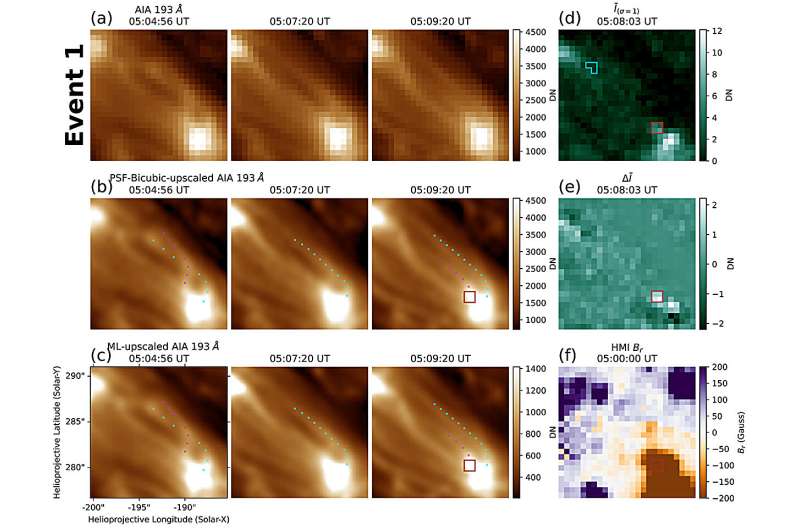This article has been reviewed according to Science X's editorial process and policies. Editors have highlighted the following attributes while ensuring the content's credibility:
fact-checked
peer-reviewed publication
trusted source
proofread
Researchers obtain evidence for nanoflares heating coronal loops

Researchers from Yunnan Observatories of the Chinese Academy of Sciences have demonstrated the evolution of separated strands within the apparent single coronal loops observed in Atmospheric Imaging Assembly (AIA) images.
This work was published in Astronomy & Astrophysics on Oct. 30.
Theoretically, both wave heating and reconnection-type heating could contribute to the heating of coronal loops, especially the warm loops at temperatures around 1–1.5 MK, which are ubiquitous, long-lived, and seemingly stable in the corona.
However, there is still no observation showing the exchange of segments and footpoints of the braiding structures within coronal loops, which is expected to be the morphological evolution of the reconnected magnetic bundles, as implied by the pictures of nanoflare.
In this study, the researchers developed a machine learning (ML) model to upscale and enhance the uninterrupted full-disk AIA images to match the simultaneous images taken by High-resolution Coronal Imager (Hi-C) during its brief flight. The AIA images enhanced by the ML model resolved some substructures braiding with each other in what appear to be single AIA structure.
In particular, the pairs of braiding loop strands were found to evolve to two parallel ones accompanied by impulsive heating in their footpoints, supporting the conclusion that the interaction between the ML-resolved substructures produced a nanoflare.
The ML algorithm proposed in this study is powerful enough to reveal the substructures at the scale of one pixel in an image with relatively low resolution.
More information: Yi Bi et al, Morphological evidence for nanoflares heating warm loops in the solar corona, Astronomy & Astrophysics (2023). DOI: 10.1051/0004-6361/202346944
Journal information: Astronomy & Astrophysics
Provided by Chinese Academy of Sciences


















